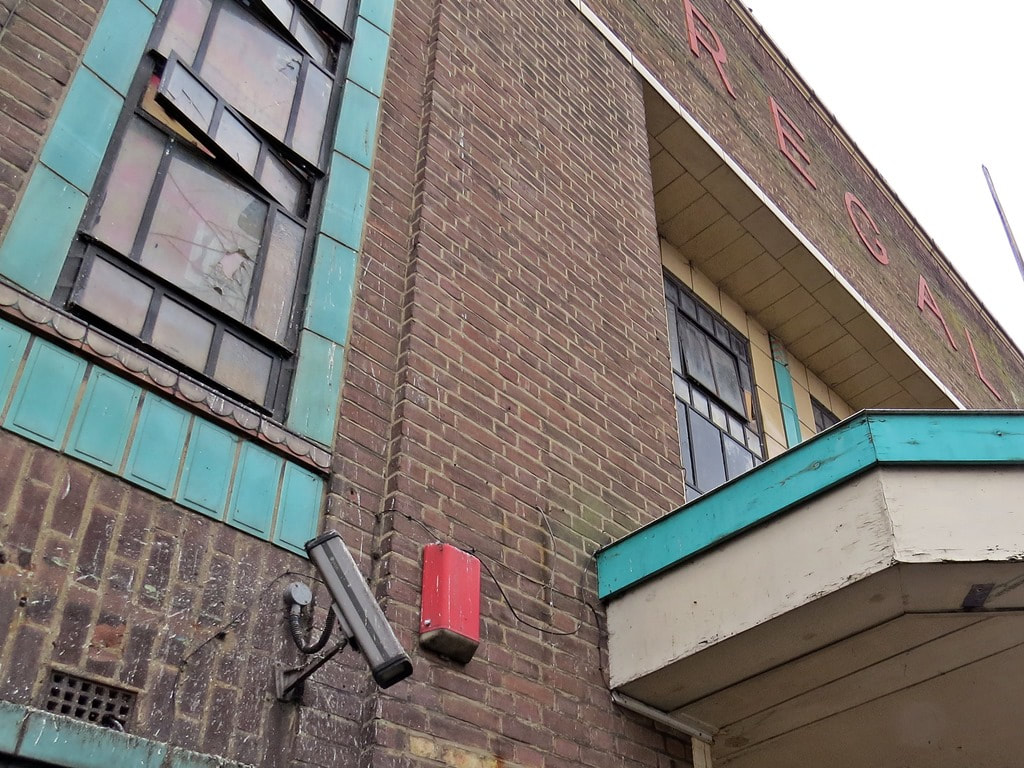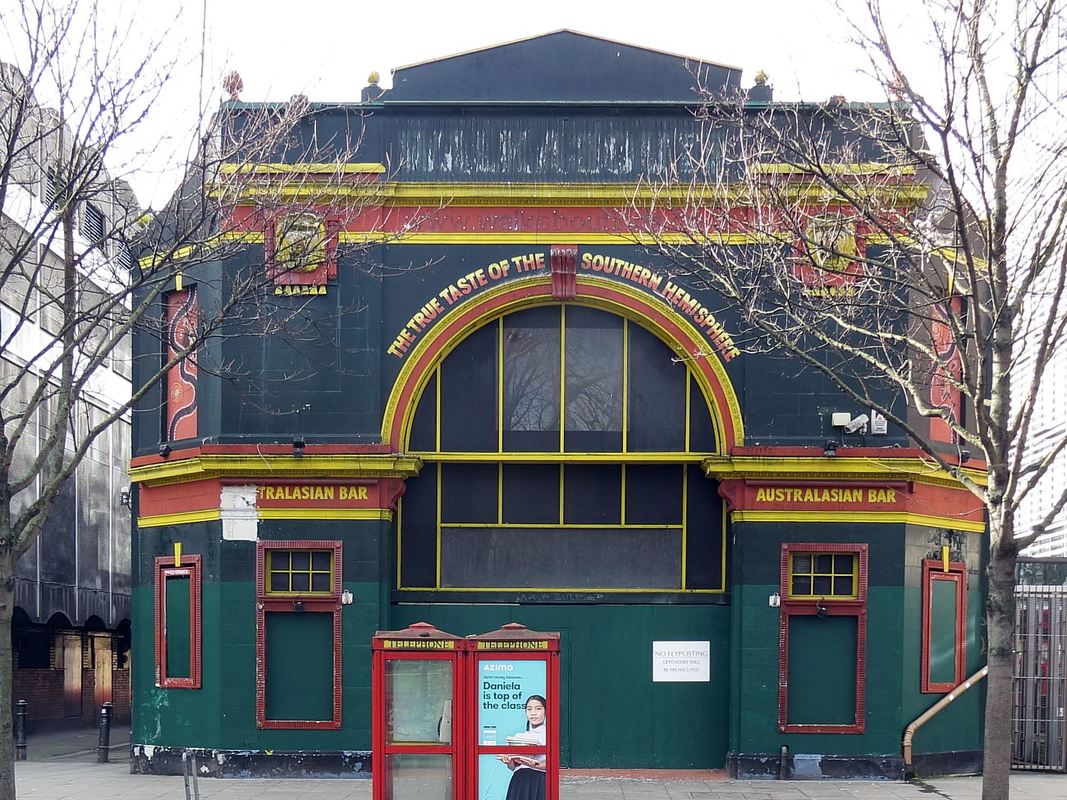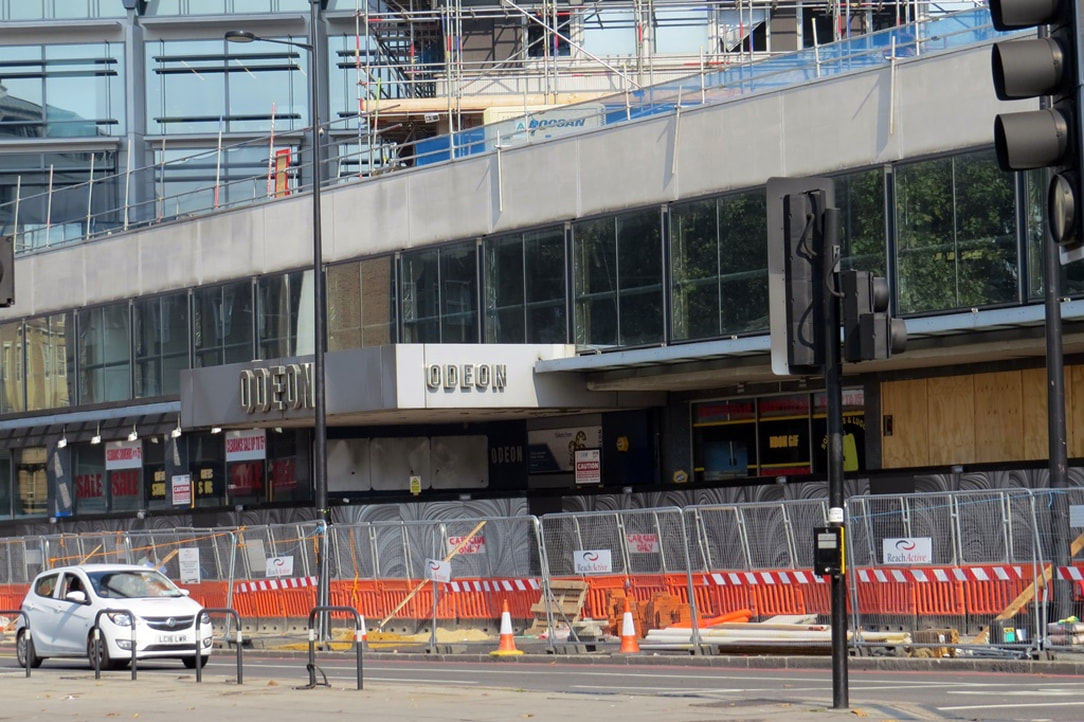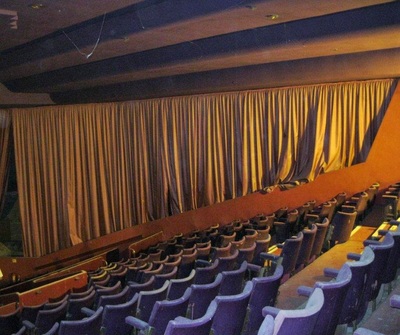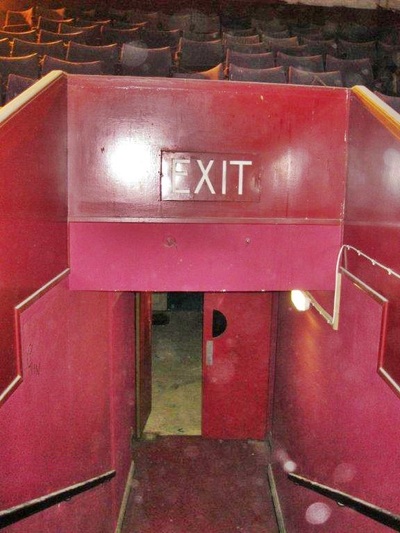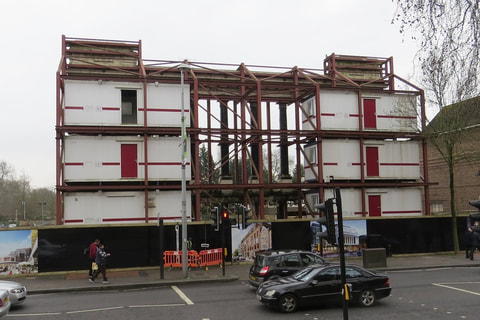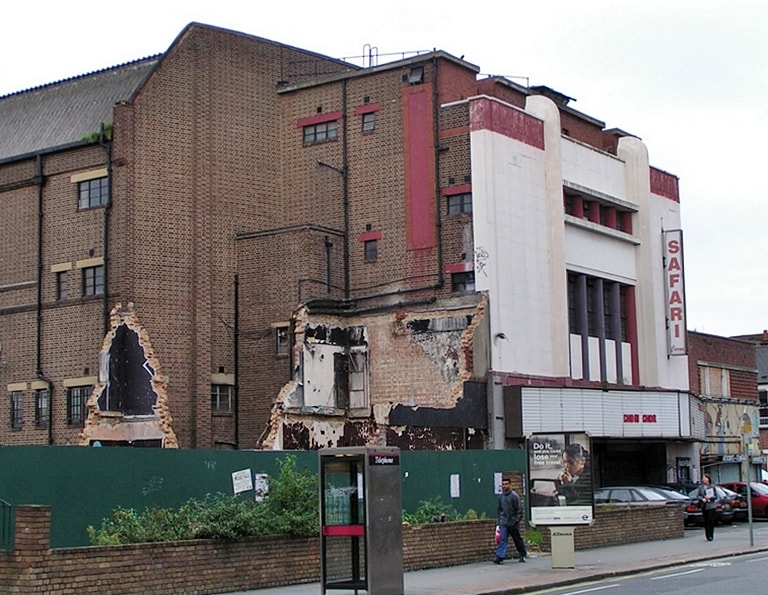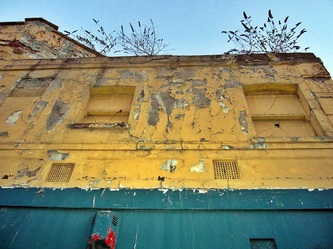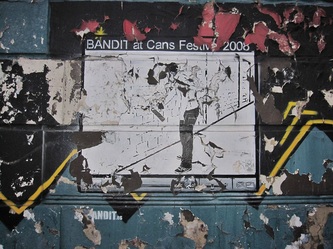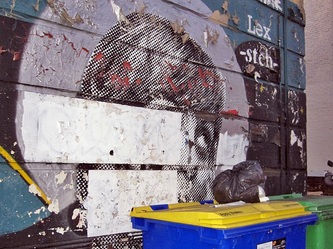Here is a selection of redundant cinemas that I have photographed since 2003. Some have been demolished, a few facades retained, whole buildings turned into churches and others remain pretty the same sorry state since first photographed by me. This cinema page was updated in June 2021. Read about their fortunes (or not) below:
HIGHAMS PARK , E4- REGAL CINEMA
The building opened as the Higham’s Park Electric Theatre in 1911 with a seating capacity of 550 before being re-named Regal Cinema in 1928.
In 1935, it was partly rebuilt with a new modern Art Deco style facade and entrance foyer with an enlarged auditorium increasing seated capacity to 615. The Regal Cinema closed as a cinema in 1963 and used as a bingo club for a short while before returning as a cinema the following year but finally closed in 1971 and the cinema was shared by a bingo club and snooker hall. The snooker club (The Hurricane Room aka The Regal Club) and a bar continued until 2014.
In 2019 work is due to commence on refurbishment planning two new cinema screens and 30 new homes. The ground floor will consist of a large open entrance foyer, cinema screens and restaurant to the front of the building with apartments to upper floors. The architect's say: "A 2-storey roof extension will provide further accommodation and is principally formed of glass with an aqua metallic veil (metal mesh cladding) which will drape the extension, acting as a curtain to provide privacy for the occupiers. The residential accommodation will be built around a central atrium, accessed from Beech Hall Road".
The Regal was used for filming scenes in the 1970 film Deep End starring Jane Asher, John Moulder Brown & Diana Dors.
In 1935, it was partly rebuilt with a new modern Art Deco style facade and entrance foyer with an enlarged auditorium increasing seated capacity to 615. The Regal Cinema closed as a cinema in 1963 and used as a bingo club for a short while before returning as a cinema the following year but finally closed in 1971 and the cinema was shared by a bingo club and snooker hall. The snooker club (The Hurricane Room aka The Regal Club) and a bar continued until 2014.
In 2019 work is due to commence on refurbishment planning two new cinema screens and 30 new homes. The ground floor will consist of a large open entrance foyer, cinema screens and restaurant to the front of the building with apartments to upper floors. The architect's say: "A 2-storey roof extension will provide further accommodation and is principally formed of glass with an aqua metallic veil (metal mesh cladding) which will drape the extension, acting as a curtain to provide privacy for the occupiers. The residential accommodation will be built around a central atrium, accessed from Beech Hall Road".
The Regal was used for filming scenes in the 1970 film Deep End starring Jane Asher, John Moulder Brown & Diana Dors.
WALTHAMSTOW, E17 - THE DOMINION
The Dominion, built on the site of an earlier cinema (the Prince’s Pavilion 1909-1930), was built to seat 1685 and came complete with a Wurlitzer organ. It opened on a very foggy night in 1930 with a showing of Little Accident, starring Douglas Fairbanks Jr.
The cinema closed in 1958 and was then used for wrestling. It reopened as a cinema a short while afterwards, only to close again for conversion to a bingo hall in 1961 – the fate of so many grand cinemas. The bingo hall closed in 1996 and plans to convert the building into a nightclub fell through. The building is boarded up and has been unloved ever since. The cinema’s grand frontage used to be twice as tall.
The Jasmine Bingo signs disappeared soon after my photos below were taken in 2003 and planning permission has been obtained for demolition of the existing building and for the construction of 48 flats over 5 storeys which will no doubt get a nice scenic view of the Lidl supermarket over the road. Demolition commenced in November 2019.
Derelict London visitor DB recalls: "It was a Music hall / Cinema combined.. On its opening night it was shrouded in heavy fog…and it is noted that "The carriages arriving, were only visible by the foyer lights"... It is noted and logged at "Vestry House Museum", Walthamstow Village.. (It used to back onto my infant school...but it's all changed now...roads have gone...playgrounds gone...half the school was demolished to make way for a new access road...)"
The cinema closed in 1958 and was then used for wrestling. It reopened as a cinema a short while afterwards, only to close again for conversion to a bingo hall in 1961 – the fate of so many grand cinemas. The bingo hall closed in 1996 and plans to convert the building into a nightclub fell through. The building is boarded up and has been unloved ever since. The cinema’s grand frontage used to be twice as tall.
The Jasmine Bingo signs disappeared soon after my photos below were taken in 2003 and planning permission has been obtained for demolition of the existing building and for the construction of 48 flats over 5 storeys which will no doubt get a nice scenic view of the Lidl supermarket over the road. Demolition commenced in November 2019.
Derelict London visitor DB recalls: "It was a Music hall / Cinema combined.. On its opening night it was shrouded in heavy fog…and it is noted that "The carriages arriving, were only visible by the foyer lights"... It is noted and logged at "Vestry House Museum", Walthamstow Village.. (It used to back onto my infant school...but it's all changed now...roads have gone...playgrounds gone...half the school was demolished to make way for a new access road...)"
More 2019 images:
BURNT OAK, HA8 - SAVOY CINEMA
Designed by well-known cinema architect George Coles, this cinema opened just before the Second World War. There were 2,000 seats and a second-hand Christie organ obtained from a cinema in Glasgow.
In 1960, it hosted jazz concerts including Carmen McRae & Tubby Hayes, and concerts by early popstars Adam Faith & Ricky Valance. In 1961, it briefly became the Essoldo Cinema before becoming London's first bingo club later that year - it is said to be the first permanent building in London to be exclusively devoted to the game.
Mecca closed down the bingo club in 2014 and the building had been vacant ever since, and its future use is uncertain though it is a Grade II Listed building. The venue made the London headlines in 2016 after 700 youths turned up for a "squat rave." Riot police, police dogs & helicopters were in attendance of what locals described as a battlefield.
In 1960, it hosted jazz concerts including Carmen McRae & Tubby Hayes, and concerts by early popstars Adam Faith & Ricky Valance. In 1961, it briefly became the Essoldo Cinema before becoming London's first bingo club later that year - it is said to be the first permanent building in London to be exclusively devoted to the game.
Mecca closed down the bingo club in 2014 and the building had been vacant ever since, and its future use is uncertain though it is a Grade II Listed building. The venue made the London headlines in 2016 after 700 youths turned up for a "squat rave." Riot police, police dogs & helicopters were in attendance of what locals described as a battlefield.
SHEPHERDS BUSH, W12 - CINEMATOGRAPH THEATRE
This was originally opened in 1910 as the Shepherd's Bush Cinematograph Theatre. It was built by entrepreneur Montagu Pike as part of his chain of 16 moving picture houses in London. The cinema had a number of name changes over the years and finally stopped showing films in 1981 when it was known as the Odeon 2. It was later a "Mecca" bingo hall.
After standing empty for some time, it was converted into a live music venue called The Bottom Line from 1993-5 hosting acts including Nine Below Zero, Mannfred Mann's Earth Band, Quireboys, Brian Connolly's Sweet, Jayne County And The Electric Chairs, Jefferson Starship & The Revillos. It was then owned by the Walkabout chain of Australasian-themed bars until closure in 2013 allegedly due to licencing issues. Many locals complained of customers fighting and vomiting in the street outside.
Some original signage remains on the side elevation of the building today and reads: 'Cinematograph Theatre, Continuous Performances, Seats 1/-6d & 3d'. The council refused permission to demolish the building & replace it with a 16-storey block. Revised plans are to convert the shell of the building into apartments and work was already underway as of 2021 though sadly only the front facade has survived. Apparently, the side walls (with the signage below) collapsed when demolishing the interior.
After standing empty for some time, it was converted into a live music venue called The Bottom Line from 1993-5 hosting acts including Nine Below Zero, Mannfred Mann's Earth Band, Quireboys, Brian Connolly's Sweet, Jayne County And The Electric Chairs, Jefferson Starship & The Revillos. It was then owned by the Walkabout chain of Australasian-themed bars until closure in 2013 allegedly due to licencing issues. Many locals complained of customers fighting and vomiting in the street outside.
Some original signage remains on the side elevation of the building today and reads: 'Cinematograph Theatre, Continuous Performances, Seats 1/-6d & 3d'. The council refused permission to demolish the building & replace it with a 16-storey block. Revised plans are to convert the shell of the building into apartments and work was already underway as of 2021 though sadly only the front facade has survived. Apparently, the side walls (with the signage below) collapsed when demolishing the interior.
BETHNAL GREEN, E2 - SMARTS PICTURE HOUSE (aka REX CINEMA)
The cinema opened by small cinema operator George Smart as Smart’s Picture House in 1913. It had seating for over 800 cinema goers, and was also equipped for variety. The building takes its current form after renowned cinema architect George Coles redesigned the facade and auditorium in 1938 in Art Deco style when it was renamed the Rex Cinema before Essoldo Cinema took in over in 1949. It is said that the notorious East End gangland twins Ronnie and Reggie Kray, who grew up in Vallance Road a few hundred yards away, would spend their weekly pocket money to watch films here.
It was converted into a bingo club in 1964 which closed in 1990. The building was then a wholesale retailer of materials to the fashion industry called Frankle Trimmings. The 'R' from Frankle is the only letter remaining of their signage on the now empty building. A few months later since this pic was taken the 'R' has dropped off too.
Owners were given planning permission by Tower Hamlets Council to reopen it as the Rex Cinema Hotel - a single-screen cinema with rooftop bar, restaurant and a 130-bed boutique hotel. We were led to believe that this would involve the restoration of the building though it was completely demolished in 2020 with a new facade to be built to replicate the old one.
It was converted into a bingo club in 1964 which closed in 1990. The building was then a wholesale retailer of materials to the fashion industry called Frankle Trimmings. The 'R' from Frankle is the only letter remaining of their signage on the now empty building. A few months later since this pic was taken the 'R' has dropped off too.
Owners were given planning permission by Tower Hamlets Council to reopen it as the Rex Cinema Hotel - a single-screen cinema with rooftop bar, restaurant and a 130-bed boutique hotel. We were led to believe that this would involve the restoration of the building though it was completely demolished in 2020 with a new facade to be built to replicate the old one.
Marble Arch Odeon Cinema + Tyburn pub)
Opening on the site of a previous cinema (1928 to 1964 first as the Regal and later the Odeon) the rebuilt Odeon opened in 1967 as apparently the largest cinema constructed in the post-war years with seating for 1360.
In 1996, the cinema was converted into a 5 screen multiplex, within the existing space. The site including the adjacent 24-storey office tower block, a few shops and JD Wetherspoon's pub 'The Tyburn' was purchased in 2011 for £80 million. In May 2016, Odeon Marble Arch closed its doors for the final time and demolition works commenced later that year. Few people will mourn the loss of these buildings. The shops sold tacky souvenirs and the Tyburn never had a great atmosphere.
The 1960s buildings will be replaced by Marble Arch Place: a residential, office and retail scheme plus a new Odeon cinema scheduled for completion in 2020.
These photographs were taken in late 2016 and needless to say by the time you read this the site will have dramatically changed.
In 1996, the cinema was converted into a 5 screen multiplex, within the existing space. The site including the adjacent 24-storey office tower block, a few shops and JD Wetherspoon's pub 'The Tyburn' was purchased in 2011 for £80 million. In May 2016, Odeon Marble Arch closed its doors for the final time and demolition works commenced later that year. Few people will mourn the loss of these buildings. The shops sold tacky souvenirs and the Tyburn never had a great atmosphere.
The 1960s buildings will be replaced by Marble Arch Place: a residential, office and retail scheme plus a new Odeon cinema scheduled for completion in 2020.
These photographs were taken in late 2016 and needless to say by the time you read this the site will have dramatically changed.
Fullwell Cross, Barkingside, IG6 - State Cinema
The State cinema was built by famous cinema architect George Coles and opened in October 1938 with a seating capacity of nearly 2,200. In 1940, it suffered some bomb damage and was closed down and requisitioned by the Government War Office to be used as a store house for the remainder of the war.
After the war it reopened as the ABC then in 1978 became the Ace cinema in August 1984 it closed its doors for the last time. The stall area is currently used for bingo, but the remainder of the cinema is all still there in its disused dusty glory and according to Lee Unwin (who took the interior pics), there is local talk of the cinema reopening one day. All the photographs below were taken around 2016.
After the war it reopened as the ABC then in 1978 became the Ace cinema in August 1984 it closed its doors for the last time. The stall area is currently used for bingo, but the remainder of the cinema is all still there in its disused dusty glory and according to Lee Unwin (who took the interior pics), there is local talk of the cinema reopening one day. All the photographs below were taken around 2016.
Ealing, W5 - Empire Cinema
Opened in 1934 as the Ealing Forum Theatre (identical to the Forum Theatre in Kentish Town which is now still intact and operating as a well-known music venue) & seated 2,175 on two levels. The opening film was “Love, Life & Laughter” starring Gracie Fields made in Ealing Studios. The cinema’s opening ceremony was performed by stage and screen star Jack Buchanan.
Renamed ABC in 1961 (later name changes include Cannon, MGM, UGC, Cineworld, and it was last known as the Empire). The cinema was assessed for listing in 2003 by English Heritage but was turned down. It closed down in 2008 and demolished (apart from the facade) in early 2009.
Empire originally had plans for a 16 screen cinema but building work never started. In 2015 permission was granted for development after the Secretary of State gave approval for the council to compulsorily purchase the land. A new 1,000-seater cinema (Ealing Filmworks) will be built as part of a £100m development that will feature eight new screens, 1,000 seats, restaurants, shops and 160 flats, as part of plans described as a new Ealing cultural quarter.
Opened in 1934 as the Ealing Forum Theatre (identical to the Forum Theatre in Kentish Town which is now still intact and operating as a well-known music venue) & seated 2,175 on two levels. The opening film was “Love, Life & Laughter” starring Gracie Fields made in Ealing Studios. The cinema’s opening ceremony was performed by stage and screen star Jack Buchanan.
Renamed ABC in 1961 (later name changes include Cannon, MGM, UGC, Cineworld, and it was last known as the Empire). The cinema was assessed for listing in 2003 by English Heritage but was turned down. It closed down in 2008 and demolished (apart from the facade) in early 2009.
Empire originally had plans for a 16 screen cinema but building work never started. In 2015 permission was granted for development after the Secretary of State gave approval for the council to compulsorily purchase the land. A new 1,000-seater cinema (Ealing Filmworks) will be built as part of a £100m development that will feature eight new screens, 1,000 seats, restaurants, shops and 160 flats, as part of plans described as a new Ealing cultural quarter.
CARLTON CINEMA (aka ABC Cinema) - ESSEX RD, N1
This Grade 2 listed building was designed by renowned cinema architect George Coles in 1930. Typical of Coles' style such as the Troxy in Stepney Green and some other Odeon cinemas across the UK, the façade of the building is in the form of an Egyptian 'pylon' temple and is decorated with Egyptian iconography including lotus flowers and buds. It is faced with brightly coloured ceramic tiles.
Inside, the building decorated with Empire style fittings, with more Egyptian-style touches in the auditorium. It was equipped with plush balcony seating and a café for patrons, and once housed a large organ to be played during silent movie performances.
The last film shown was the comedy “Mutiny on the Buses”. After this is operated as a Mecca bingo hall, which ran up until 2007. A religious organisation then bought the site and have reopened it as Gracepoint, used for prayer meetings twice a week and as an events space available for hire the rest of the time.
Brian Mulligan told Derelict London: "I once wrote a song about this place - the ABC where she kissed me now has bingo on every night"
Inside, the building decorated with Empire style fittings, with more Egyptian-style touches in the auditorium. It was equipped with plush balcony seating and a café for patrons, and once housed a large organ to be played during silent movie performances.
The last film shown was the comedy “Mutiny on the Buses”. After this is operated as a Mecca bingo hall, which ran up until 2007. A religious organisation then bought the site and have reopened it as Gracepoint, used for prayer meetings twice a week and as an events space available for hire the rest of the time.
Brian Mulligan told Derelict London: "I once wrote a song about this place - the ABC where she kissed me now has bingo on every night"
STRATFORD, E15 - THE REX CINEMA
Opened as the Borough Theatre and Opera House, in 1896 designed by Frank Matcham and the venue was known as the ‘Drury Lane of the East.’
A new corner entrance was added, and the auditorium replaced and reopened complete with its own Wurlitzer organ as the Rex Cinema in 1933. It was converted to a bingo hall in 1969 then back to a cinema in 1974 for a brief spell then lay derelict for over 20 years. It was restored as a concert venue and club in 1997 but closed due to repossession by the council in 2010 after owners failed to pay rent and business rates. In 2012, after a refurbishment, it re-opened as Sync, a bar/restaurant/nightclub, which presented stand-up comedy, concerts & boxing matches. Furthermore, it boasted of a private VIP section with views of Stratford High Street (!) . Sync closed down after a short time and the former cinema reopened again in 2017- this time as an indoor trampoline park called ZAPspace.
In 1999, Richard Parkinson, 30, a doorman at the Stratford Rex was shot dead as concert-goers arrived for a gig by the Jamaican reggae artist Beenie Man. Two people were also injured by ricochets. A post on breakbeat forum recalls : "had so many dark nights at Rex, my mate got beaten up by an old Jamaican man for nicking a salt fish patty from the cafe lol"
A new corner entrance was added, and the auditorium replaced and reopened complete with its own Wurlitzer organ as the Rex Cinema in 1933. It was converted to a bingo hall in 1969 then back to a cinema in 1974 for a brief spell then lay derelict for over 20 years. It was restored as a concert venue and club in 1997 but closed due to repossession by the council in 2010 after owners failed to pay rent and business rates. In 2012, after a refurbishment, it re-opened as Sync, a bar/restaurant/nightclub, which presented stand-up comedy, concerts & boxing matches. Furthermore, it boasted of a private VIP section with views of Stratford High Street (!) . Sync closed down after a short time and the former cinema reopened again in 2017- this time as an indoor trampoline park called ZAPspace.
In 1999, Richard Parkinson, 30, a doorman at the Stratford Rex was shot dead as concert-goers arrived for a gig by the Jamaican reggae artist Beenie Man. Two people were also injured by ricochets. A post on breakbeat forum recalls : "had so many dark nights at Rex, my mate got beaten up by an old Jamaican man for nicking a salt fish patty from the cafe lol"
STREATHAM - GAUMONT PALACE aka MEGABOWL
Built originally as the 2300+ seater Gaumont Palace Cinema in 1932. It featured an open-air portico terrace above the entrance which served afternoon tea in Summer. The building suffered bomb damage courtesy of a German V1 rocket during the war and was used thereafter as a factory. The cinema re-opened in 1955 & closed again in 1961. The building reopened as Top Rank Bowl in 1962 with 40 lanes, the largest bowling alley in Europe. It had been a bowling alley ever since until closure in 2008 though by the end the number of lanes had been reduced to accommodate laser shootout rooms.
In 2002 Streatham High Road was named as the worst street in Britain in a poll by the Commission for Architecture and the Built Environment. The street's "run-down shopfronts, broken lighting, cramped and broken pavements and an ever-growing number of Met yellow signs advertising violent crime" were highlighted.
Most of the cinema building was demolished in 2015 with only the former facade retained and the new development was completed in 2018. Developers describe it as a "collection of smartly designed high specification studio, one, two and three-bedroom apartments elevate this landmark location and puts you in the best possible place for enjoying the fashionable SW2 neighbourhood".
In 2002 Streatham High Road was named as the worst street in Britain in a poll by the Commission for Architecture and the Built Environment. The street's "run-down shopfronts, broken lighting, cramped and broken pavements and an ever-growing number of Met yellow signs advertising violent crime" were highlighted.
Most of the cinema building was demolished in 2015 with only the former facade retained and the new development was completed in 2018. Developers describe it as a "collection of smartly designed high specification studio, one, two and three-bedroom apartments elevate this landmark location and puts you in the best possible place for enjoying the fashionable SW2 neighbourhood".
FOREST HILL - CAPITOL CINEMA
The Capitol opened as a cinema in 1929. Renamed the ABC in 1968, the cinema gave its last picture show in 1973. There were plans to convert and even demolish the building. However, The Capitol opened as a bingo hall in 1978 and then closing in 1996. The building was saved and now bears its original name as a JD Wetherspoon pub which opened on the ground floor in 2001 continuing the Chain's presence in Forest Hill after vacating the smaller Bird in Hand round the corner. However, the basement and the upper circle remains disused and untouched - all the dusty old seats remain with little metal ashtrays on the back of the seats. There are tales of paranormal activity related to a man who died in the building back in the cinema's heyday.
The pub chain put The Capitol up for sale in 2016, but there has no progress with the sale despite rumours of interests from a religious organisation
The pub chain put The Capitol up for sale in 2016, but there has no progress with the sale despite rumours of interests from a religious organisation
STREATHAM - REGAL CINEMA (aka ABC & Cannon)
Opened as The Regal in 1938 with Ginger Rogers in "Vivacious Lady" with seating for nearly 2000 people. The side walls of the circle had back-lit niches in the sidewalls which contained Art Deco style figurines. Re-named the ABC in 1977 then later Cannon Cinema then back to ABC just before closing in 2000. It had been given a Grade II Listed building status but only the front not the auditorium.
Squatters moved in and caused several fires and there were raves in the vacant building. Unfortunately, in 2004 the auditorium was demolished & apartments were built on the site, with the original cinema facade and foyer retained as an entrance. Since this photograph was taken in 2012 the foyer is now occupied by a flooring retailer called Floor Design Studio.
Squatters moved in and caused several fires and there were raves in the vacant building. Unfortunately, in 2004 the auditorium was demolished & apartments were built on the site, with the original cinema facade and foyer retained as an entrance. Since this photograph was taken in 2012 the foyer is now occupied by a flooring retailer called Floor Design Studio.
HOXTON, N1 - THE CINEMA
The Cinema in Hoxton opened in 1914 and had a capacity of 866. It was temporarily closed at the height of the Blitz, and finally shut its doors in 1956, a victim to the rival claims on people’s attention of the up and coming world of television.
The building lay empty for four years, and was then used as a meat storage facility until 2001. Plans for the site were that the original facade could be preserved, but it was then completely demolished in 2016 due to health and safety concerns. An exact replica of the facade is now under construction to front a new cinema and apartments. 'Then and Now' pictures can be seen in Derelict London All New Edition published in July 2019 (Penguin Random House Books)
The building lay empty for four years, and was then used as a meat storage facility until 2001. Plans for the site were that the original facade could be preserved, but it was then completely demolished in 2016 due to health and safety concerns. An exact replica of the facade is now under construction to front a new cinema and apartments. 'Then and Now' pictures can be seen in Derelict London All New Edition published in July 2019 (Penguin Random House Books)
Then and Now: ELTHAM, SE9 - CORONET CINEMA
Opened as the Odeon Cinema in 1936 to serve the suburban development in the Well Hall area of Eltham. Subsequently, it became the Coronet. It finally closed its doors in 1999 due to declining trade.
Just across the roundabout from the Coronet cinema, opposite an anonymous bus stop along an anonymous suburban road lies a simple grey marble plaque.Engraved with the epitaph 'In memory of Stephen Lawrence'. Black teenager Stephen Lawrence was murdered by thugs at this bus stop. A bungled police investigation means no one has been convicted for his murder.
Local campaigners wanted to see the borough’s first bowling alley built on the site after being prey to vandals the auditorium was demolished in 2011 leaving only the front corner entrance intact. By 2015, the entrance foyer had been converted into a gymnasium and flats called The Coronet Apartments built behind it.
Debbie writes: "Your photos of Eltham Coronet cinema made me smile and brought back memories of when I was a student in the early 90s and used to go to the Turnpike Lane Coronet cinema. It had the same signs and presumably was the same chain. Monday night was student night (tickets £1!) and that gave access to creaky valour seats with stains of dubious origins, ripped carpets, clouds of fag smoke and a slightly wobbly screen with Now That's What I Call Music vol 2 playing on a loop until the film started. The combination of the place being so mingy and full of students on a Monday meant that we usually pretty much had the place to ourselves. I can remember a gang of us dancing on the stage to Now 2 until one of the staff came in and shouted at us. The staff were the best bit- grumpy, abrupt and shielded behind bulletproof screens. They grunted, threw your change and ticket at you you only ever got half a carton of popcorn because most of it fell on the floor when they slammed it down hard on the counter. Oh, happy days indeed!"
Just across the roundabout from the Coronet cinema, opposite an anonymous bus stop along an anonymous suburban road lies a simple grey marble plaque.Engraved with the epitaph 'In memory of Stephen Lawrence'. Black teenager Stephen Lawrence was murdered by thugs at this bus stop. A bungled police investigation means no one has been convicted for his murder.
Local campaigners wanted to see the borough’s first bowling alley built on the site after being prey to vandals the auditorium was demolished in 2011 leaving only the front corner entrance intact. By 2015, the entrance foyer had been converted into a gymnasium and flats called The Coronet Apartments built behind it.
Debbie writes: "Your photos of Eltham Coronet cinema made me smile and brought back memories of when I was a student in the early 90s and used to go to the Turnpike Lane Coronet cinema. It had the same signs and presumably was the same chain. Monday night was student night (tickets £1!) and that gave access to creaky valour seats with stains of dubious origins, ripped carpets, clouds of fag smoke and a slightly wobbly screen with Now That's What I Call Music vol 2 playing on a loop until the film started. The combination of the place being so mingy and full of students on a Monday meant that we usually pretty much had the place to ourselves. I can remember a gang of us dancing on the stage to Now 2 until one of the staff came in and shouted at us. The staff were the best bit- grumpy, abrupt and shielded behind bulletproof screens. They grunted, threw your change and ticket at you you only ever got half a carton of popcorn because most of it fell on the floor when they slammed it down hard on the counter. Oh, happy days indeed!"
ENFIELD, EN1 - RIALTO CINEMA (AKA GRANADA BINGO CLUB)
The Rialto Cinema opened in 1920 and improvements were made to the building a few years later by architect Cecil Masey and legendary cinema interior designer Theodore Komisarjevsky.
There were two entrances, the smaller entrance in a narrow backstreet served the balcony and best seats and the ornate entrance facing the Market Place gave entry to the cheaper seats. The seating accommodated a total of approx 1300 seats. The Rialto was re-named Granada in 1967 but closed 4 years later with Burt Lancaster in "Valdez Is Coming" and Michael Crawford in "The Jokers" being the last films shown. The building was converted into a Granada Bingo Club & later as Gala Bingo.
It closed down altogether in 1997 photographed here in (approx) 2009 and then demolished in 2010. Flats and retail now occupy the site.
There were two entrances, the smaller entrance in a narrow backstreet served the balcony and best seats and the ornate entrance facing the Market Place gave entry to the cheaper seats. The seating accommodated a total of approx 1300 seats. The Rialto was re-named Granada in 1967 but closed 4 years later with Burt Lancaster in "Valdez Is Coming" and Michael Crawford in "The Jokers" being the last films shown. The building was converted into a Granada Bingo Club & later as Gala Bingo.
It closed down altogether in 1997 photographed here in (approx) 2009 and then demolished in 2010. Flats and retail now occupy the site.
Then and Now: WALTHAMSTOW, E17 - EMPRESS ELECTRIC PICTURE THEATRE
The Empress Cinema in Hoe Street near the junction with the Bakers Arms, dates from 1913 as the Empress Electric Picture Theatre, built by local builders and merchants, Good Brothers. It became the Cameo in 1961, closing in 1963 to become a bingo club, then it reopened to show uncensored sex films in 1970 as the Tatler Film Club, the opening films were Love Lamp Seven and Free Love Confidential, it eventually closed in Aug 1981 to become an amusement arcade. Listed for preservation by the Department of Culture Media and Sport on the advice of English Heritage. Now it's been refurbished as is the Kingsway International Christian Centre.
Then and Now: WALTHAMSTOW, E17 - EMD CINEMA
The outside was designed by Cecil Masey and the interior by Theodore Komisarjevsky, both in a Moorish style. Komisarjevsky was a refugee Russian prince working for Sidney Bernstein in creating truly escapist entertainment for the masses. Foyers were lined with mirrors, and gilding and marble effects heavily used to make the customers feel like royalty. This was one of Bernstein's flag-ship Granada cinemas back in 1930 and still has it's Christie organ which has reportedly suffered only minor damage from vandalism and pigeons and organ enthusiasts at least hope to have it up and running in the future!
This cinema, when opened, had three screens and could seat up to 3000 people. During the 1960s it hosted gigs by the Who, the Stones and the Beatles, among many others.
A press story from the N London Guardian while the cinema was still derelict: "The EMD cinema has been devastated during a marathon 30-hour illegal rave which saw clubbers enjoying an orgy of drug-taking and mindless vandalism. The historic Grade 2 listed building was covered in graffiti, and seats and projection equipment were ripped out and stolen during the frenzy. Dozens of residents had no sleep as up to 500 ravers broke in on Sunday at around 2am. They were still there at noon on Monday. Booming music and noisy clubbers kept residents awake and police were powerless to act as they were hugely outnumbered."
The cinema was bought by the UK Church of God (UKCG)* who wanted to turn it into a meeting centre / church. There was a lot of local opposition to this, resulting in the local council turning down UKCG's plans. The UKCG then appealed to the Government but lost. The cinema finally closed in 2003 and was purchased by a religious organisation, but the council refused planning permission to convert the building into a church after a campaign supported by comedian and presenter Griff Rhys Jones. It was sold to a pub company who re-opened part of the building in 2016 under the new name of Mirth, Marvel and Maud as a bar and arts venue hosting live music, comedy and films. The main auditorium is currently in restoration.
DB recalls to Derelict London: "In the early 80s, I used to work there. Around the back of the cinema was the handyman's workshop. One day, whilst doing an outside light check, I noticed a man walking down, towards the back of the cinema. I called out and the man stopped. He looked familiar to me, but I just couldn't place him, but I knew that I knew the face. He told me he was looking for the cinemas "handyman"..I followed him down to the workshop, and called out to the "handyman" that he had a visitor...Both men started to look at me and the man, who I thought I 'knew', asked / told me..." You don't recognise me..do you..??".. I replied "I have seen you around here before"... And then the handyman told me who it was... It was "Bobby Moore", the footballer..the World Cup 1966 footballer... THE one and only Bobby Moore... Turns out that Bobby Moore knew the handyman from when they were both children, they had grown up together in Barking and used to go to the cinema when they were both younger. One friend became a handyman, the other captained England and lifted the World Cup."
Diana Keevil writes to Derelict London: "You may be interested to know that I was invited by Mr Cecil Bernstain to do a PR stunt at the Granada Easter 1937 during the heat wave of that year. In the foyer they had rigged a canopy where I was to sit under a sign which read ' It is cooler inside than out' with a bottle of Kia Ora all set out in a holiday type atmosphere, then three or four times a day I would go up to the roof where they had rigged a platform, and performed acrobatic tricks. The film showing at the time was 'A Hundred Men and a Girl' with Deanna Durbin as this was cinevariety, the act was 'The Penslows' a Dutch Strong man acrobatic act just over from Holland.. I am at the moment giving talks to various organisations about my life and the incident of the 'Granada Cinema' features large in this talk."
This cinema, when opened, had three screens and could seat up to 3000 people. During the 1960s it hosted gigs by the Who, the Stones and the Beatles, among many others.
A press story from the N London Guardian while the cinema was still derelict: "The EMD cinema has been devastated during a marathon 30-hour illegal rave which saw clubbers enjoying an orgy of drug-taking and mindless vandalism. The historic Grade 2 listed building was covered in graffiti, and seats and projection equipment were ripped out and stolen during the frenzy. Dozens of residents had no sleep as up to 500 ravers broke in on Sunday at around 2am. They were still there at noon on Monday. Booming music and noisy clubbers kept residents awake and police were powerless to act as they were hugely outnumbered."
The cinema was bought by the UK Church of God (UKCG)* who wanted to turn it into a meeting centre / church. There was a lot of local opposition to this, resulting in the local council turning down UKCG's plans. The UKCG then appealed to the Government but lost. The cinema finally closed in 2003 and was purchased by a religious organisation, but the council refused planning permission to convert the building into a church after a campaign supported by comedian and presenter Griff Rhys Jones. It was sold to a pub company who re-opened part of the building in 2016 under the new name of Mirth, Marvel and Maud as a bar and arts venue hosting live music, comedy and films. The main auditorium is currently in restoration.
DB recalls to Derelict London: "In the early 80s, I used to work there. Around the back of the cinema was the handyman's workshop. One day, whilst doing an outside light check, I noticed a man walking down, towards the back of the cinema. I called out and the man stopped. He looked familiar to me, but I just couldn't place him, but I knew that I knew the face. He told me he was looking for the cinemas "handyman"..I followed him down to the workshop, and called out to the "handyman" that he had a visitor...Both men started to look at me and the man, who I thought I 'knew', asked / told me..." You don't recognise me..do you..??".. I replied "I have seen you around here before"... And then the handyman told me who it was... It was "Bobby Moore", the footballer..the World Cup 1966 footballer... THE one and only Bobby Moore... Turns out that Bobby Moore knew the handyman from when they were both children, they had grown up together in Barking and used to go to the cinema when they were both younger. One friend became a handyman, the other captained England and lifted the World Cup."
Diana Keevil writes to Derelict London: "You may be interested to know that I was invited by Mr Cecil Bernstain to do a PR stunt at the Granada Easter 1937 during the heat wave of that year. In the foyer they had rigged a canopy where I was to sit under a sign which read ' It is cooler inside than out' with a bottle of Kia Ora all set out in a holiday type atmosphere, then three or four times a day I would go up to the roof where they had rigged a platform, and performed acrobatic tricks. The film showing at the time was 'A Hundred Men and a Girl' with Deanna Durbin as this was cinevariety, the act was 'The Penslows' a Dutch Strong man acrobatic act just over from Holland.. I am at the moment giving talks to various organisations about my life and the incident of the 'Granada Cinema' features large in this talk."
CRYSTAL PALACE, SE19 - ALBANY CINEMA
This single floored cinema opened in 1930. During World War II it was requisitioned by the Government to be used as a food store after the war it was refurbished by George Coles and finally reopened in 1950 and renamed the Century Cinema. It closed down in 1958 and was gutted and used for many years as car showrooms before becoming an undertakers.
The building has been disused for many years and recent plans to demolish it and replace with flats has been refused. Meanwhile, in more positive news, the old Rialto cinema reopened in 2018 as the Everyman after a multimillion-pound restoration of the building that closed in 1968.
The building has been disused for many years and recent plans to demolish it and replace with flats has been refused. Meanwhile, in more positive news, the old Rialto cinema reopened in 2018 as the Everyman after a multimillion-pound restoration of the building that closed in 1968.
CATFORD - CATFORD PLAZA (ABC Cinema)
Opened in 1913 as the Central Hall Picture House & re-named Plaza Cinema from 1932 closing for a revamp in 1961 then re-opening as the ABC (Associated British Cinemas) and as converted into a two screen cinema in 1981. Later re-named Cannon Cinema but subsequently taken back in an ABC buy-out and re-named ABC again until closing for good in 2001 - or should I say 'closing for God' as it was purchased by the Brazilian-based Universal Church of the Kingdom of God (UCKG) but they were refused planning permission to convert it into a church mirroring the UCKG's unsuccessful efforts with the Granada/EMD Walthamstow. However, a public enquiry later allowed them to use the former Catford cinema as a church which opened in 2007.
CROYDON - SAFARI CINEMA (aka Savoy/Cannon/ABC
Opened in 1936, by ABC (Associated British Cinemas) with seating for 2,300. It was split into 3 screens in 1972. Renamed Cannon in 1986 and Safari in the late 1990s.
The Beatles played here the night of March 21, 1963, and their first album, Please Please Me, was released the following day. Cilla Black, Billy Fury,The Searchers, Chuck Berry, Del Shannon, Gerry & The Pacemakers, PJ Proby and Cliff Richard and The Shadows also played live shows here.
Towards the end of it's life Safari had been known as a Bollywood cinema, showing many Bollywood films as well as Hollywood blockbusters. It closed in 2004 and was demolished in 2006. The cinema has been replaced by 138 flats called Gary Court.
Wally Plummer writes : "Imagine a young lad of 15-years-old, watching Yolton Korda's 1939 version of The Four Feathers. I saw it in the middle of an air-raid! The announcement would flash up on the big screen that an air-raid was in progress, and the programme would continue. What with the noise of the Sudan uprising of the 1890s on screen and the real life gun-fire outside the building, it sounded like stereophonic sound."
P Quinn writes: "The cinema survived the Blitz, it was a place that Croydon people escaped to inside to dream of a better world. But I fear it will not survive the vested interests of developers and a council more geared than ever to keeping property developers, large chains, and big franchises happy. What Croydon Council does not seem to grasp is that cities have layers: they are mixtures of old and new, antiquated and ultra-modern. The Council should think hard before removing a small but significant layer from the town centre. But I suspect that those of us who care and hold out hope for the future of this particular dream palace can only dream on."
Peter Frearson writes: "So sad to see this wonderful old cinema like this, as school boy I saw my first western in 3d and came out at the end quite convinced I had an arrow in my school cap, this was the 1950 s when there was a bit more room on the planet."
Colin Marsh writes: "my father, LEN MARSH, was Assistant Manager at the ABC – originally called the SAVOY – until the early 1960s, when he moved to an administrative job at ABC Head Office. Dad worked for ABC from c.1946 until the late 1970s and managed a number of cinemas in and around South London, although West Croydon was his base. He acted as Relief Manager at cinemas in Purley, Norbury, Streatham, Mitcham, Balham, Tooting, Beckenham, Camberwell, Forest Hill – and those are the only ones I can remember. If anyone remembers my Dad – worked with him, perhaps – I would like to hear from them. Dad died in 1997, and I am trying to piece together the gaps in our family history." [email protected]
The Beatles played here the night of March 21, 1963, and their first album, Please Please Me, was released the following day. Cilla Black, Billy Fury,The Searchers, Chuck Berry, Del Shannon, Gerry & The Pacemakers, PJ Proby and Cliff Richard and The Shadows also played live shows here.
Towards the end of it's life Safari had been known as a Bollywood cinema, showing many Bollywood films as well as Hollywood blockbusters. It closed in 2004 and was demolished in 2006. The cinema has been replaced by 138 flats called Gary Court.
Wally Plummer writes : "Imagine a young lad of 15-years-old, watching Yolton Korda's 1939 version of The Four Feathers. I saw it in the middle of an air-raid! The announcement would flash up on the big screen that an air-raid was in progress, and the programme would continue. What with the noise of the Sudan uprising of the 1890s on screen and the real life gun-fire outside the building, it sounded like stereophonic sound."
P Quinn writes: "The cinema survived the Blitz, it was a place that Croydon people escaped to inside to dream of a better world. But I fear it will not survive the vested interests of developers and a council more geared than ever to keeping property developers, large chains, and big franchises happy. What Croydon Council does not seem to grasp is that cities have layers: they are mixtures of old and new, antiquated and ultra-modern. The Council should think hard before removing a small but significant layer from the town centre. But I suspect that those of us who care and hold out hope for the future of this particular dream palace can only dream on."
Peter Frearson writes: "So sad to see this wonderful old cinema like this, as school boy I saw my first western in 3d and came out at the end quite convinced I had an arrow in my school cap, this was the 1950 s when there was a bit more room on the planet."
Colin Marsh writes: "my father, LEN MARSH, was Assistant Manager at the ABC – originally called the SAVOY – until the early 1960s, when he moved to an administrative job at ABC Head Office. Dad worked for ABC from c.1946 until the late 1970s and managed a number of cinemas in and around South London, although West Croydon was his base. He acted as Relief Manager at cinemas in Purley, Norbury, Streatham, Mitcham, Balham, Tooting, Beckenham, Camberwell, Forest Hill – and those are the only ones I can remember. If anyone remembers my Dad – worked with him, perhaps – I would like to hear from them. Dad died in 1997, and I am trying to piece together the gaps in our family history." [email protected]
GREENWICH, SE10 - THE GRANADA
Situated at the Maze Hill end of town this cinema was opened in 1937 by Gracie Fields. The presence of 'Our Gracie' drew a crowd of several thousand bystanders who watched her perform songs from the roof balcony for the fans, who included a young Joan Collins, outside.
The cinema had seating for 1900+ people. The interior was by celebrated cinema designer Theodore Komisarjevsky. The Granada closed as a cinema in 1968 to be used as a bingo club, and later a nightclub called Stars nicknamed Stabs by some locals. In the early 2000s, the building interior was totally gutted to provide apartments with many alterations to the exterior. The building was renamed The Plaza
The foyer has since been used as a Chinese restaurant, a bookies and now an estate agent. The picture shows the building in 2014 while the foyer site was vacant.
The cinema had seating for 1900+ people. The interior was by celebrated cinema designer Theodore Komisarjevsky. The Granada closed as a cinema in 1968 to be used as a bingo club, and later a nightclub called Stars nicknamed Stabs by some locals. In the early 2000s, the building interior was totally gutted to provide apartments with many alterations to the exterior. The building was renamed The Plaza
The foyer has since been used as a Chinese restaurant, a bookies and now an estate agent. The picture shows the building in 2014 while the foyer site was vacant.
CAMBERWELL, SE5 - THE NEW GRAND HALL
Originally built as a function hall and was also used for roller skating. It opened as the New Grand Hall Cinema Theatre in 1909. In 1949, it was renamed the Grand Cinema.
Closure in 1968 was followed by conversion into a bingo hall and in 1983 into a snooker club which became very run down in appearance during its final days before closing and being promptly demolished in 2014.
Flats have been built on the site.
Closure in 1968 was followed by conversion into a bingo hall and in 1983 into a snooker club which became very run down in appearance during its final days before closing and being promptly demolished in 2014.
Flats have been built on the site.
LEYSTONSTONE - THE STATE
The round bit on the top was the projection box. pic courtesy of Roy Dart who worked at the cinema in the 1950's
Paul Talling's Derelict London - all photographs are copyright © 2003-2024
Click the envelope icon to join the mailing list for occasional news on website updates, new book releases and Paul's guided walking tours. Follow Derelict London on Facebook and Twitter
Please do not contact me with property/ filming/photo shoot location queries
Click the envelope icon to join the mailing list for occasional news on website updates, new book releases and Paul's guided walking tours. Follow Derelict London on Facebook and Twitter
Please do not contact me with property/ filming/photo shoot location queries





